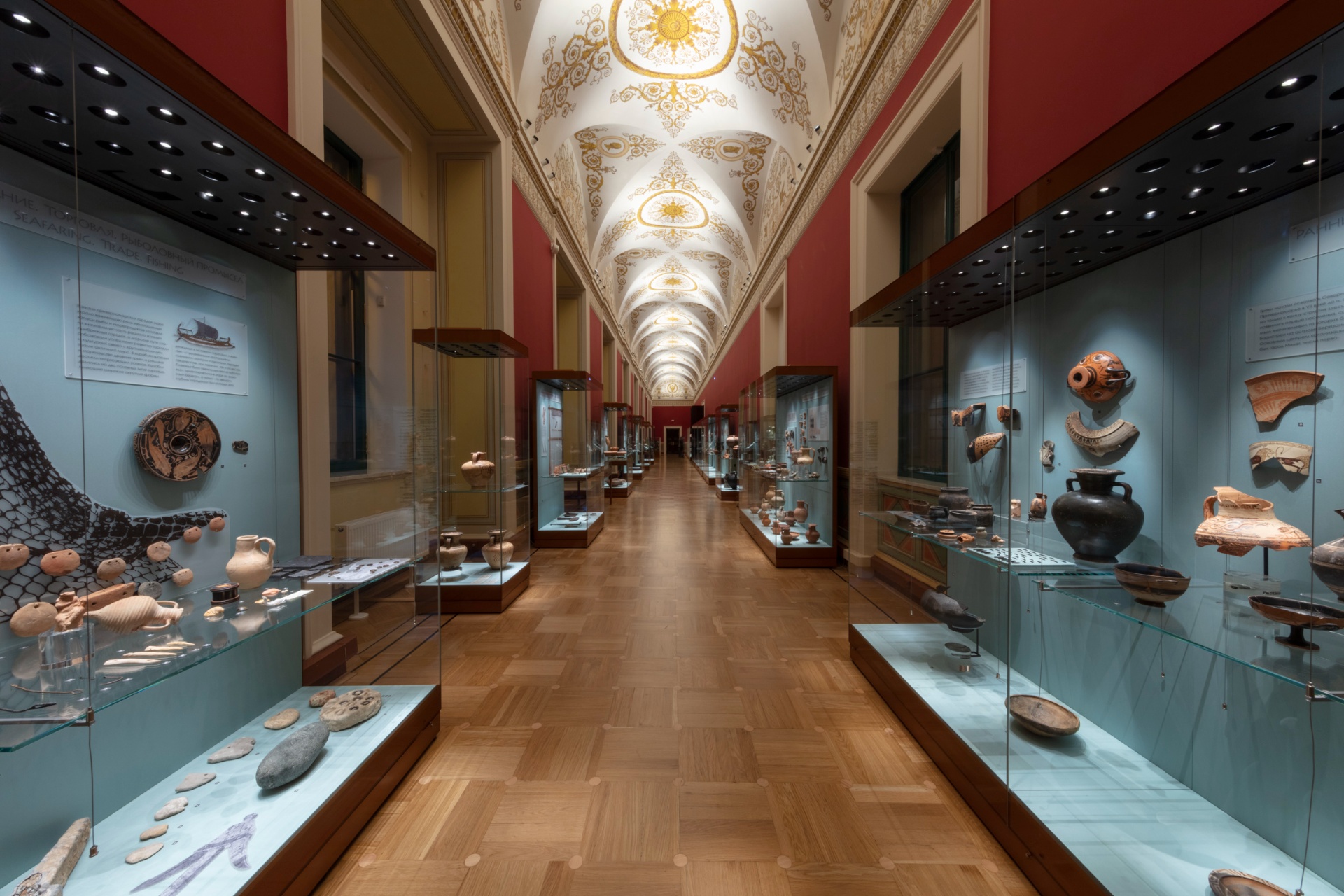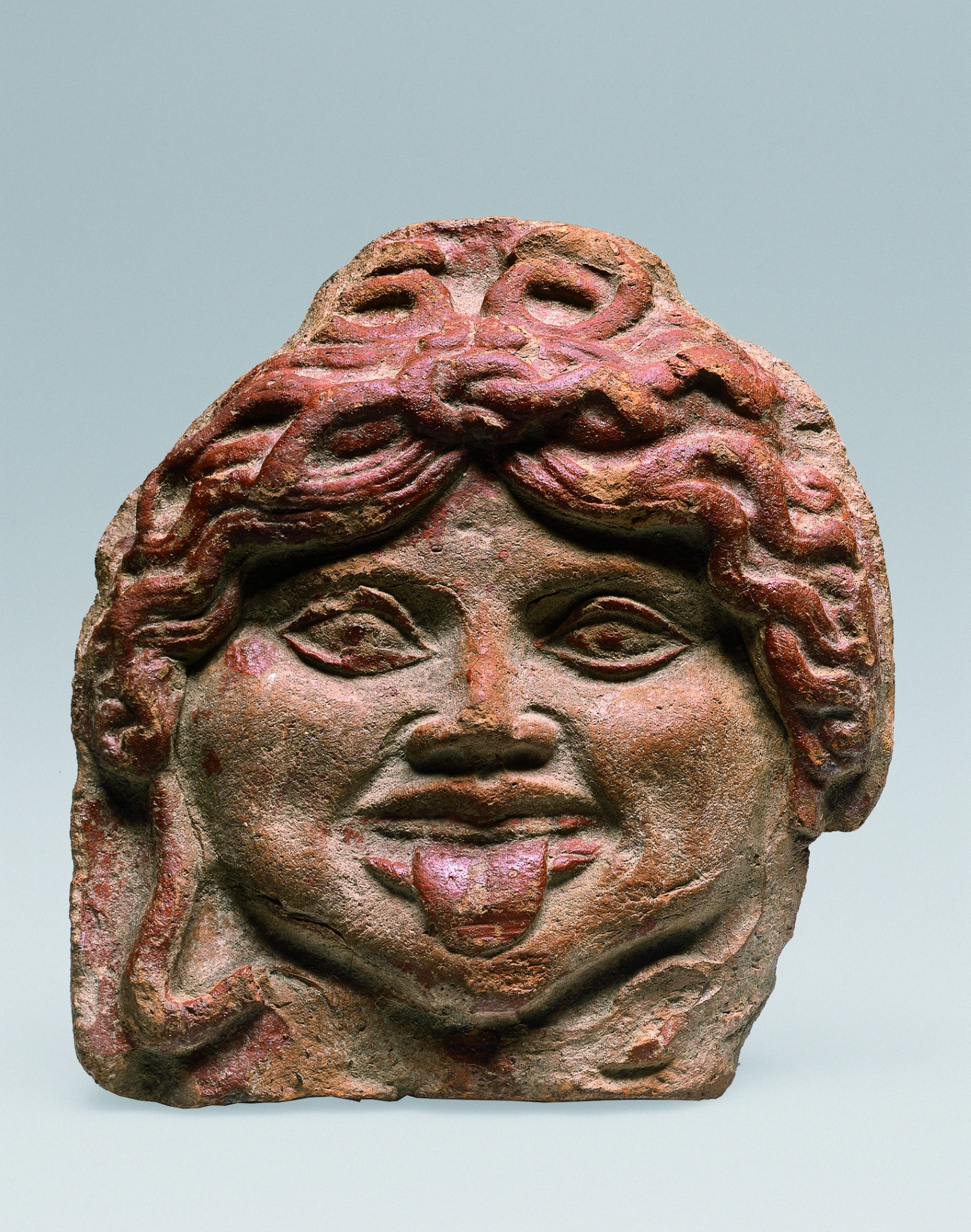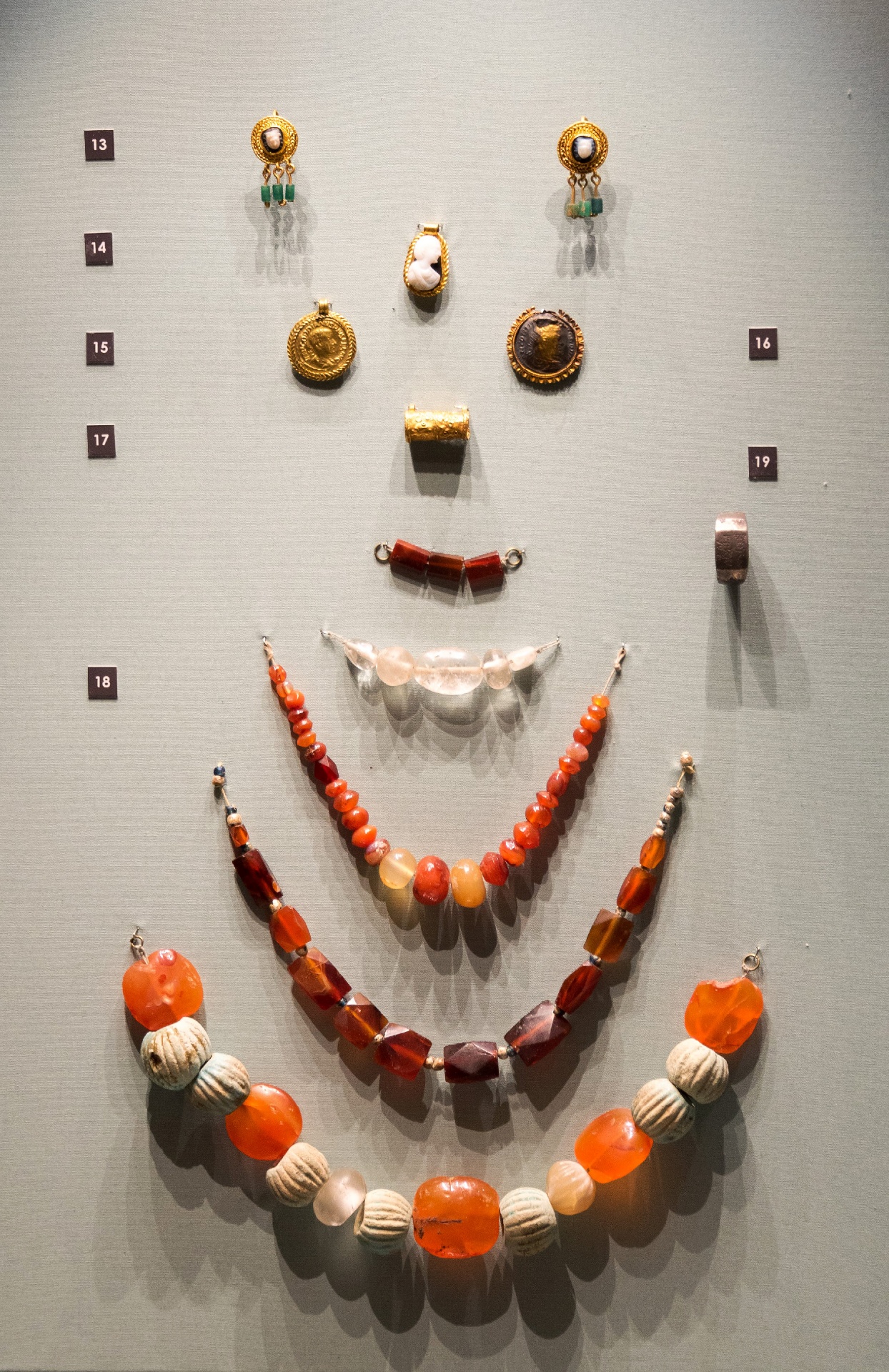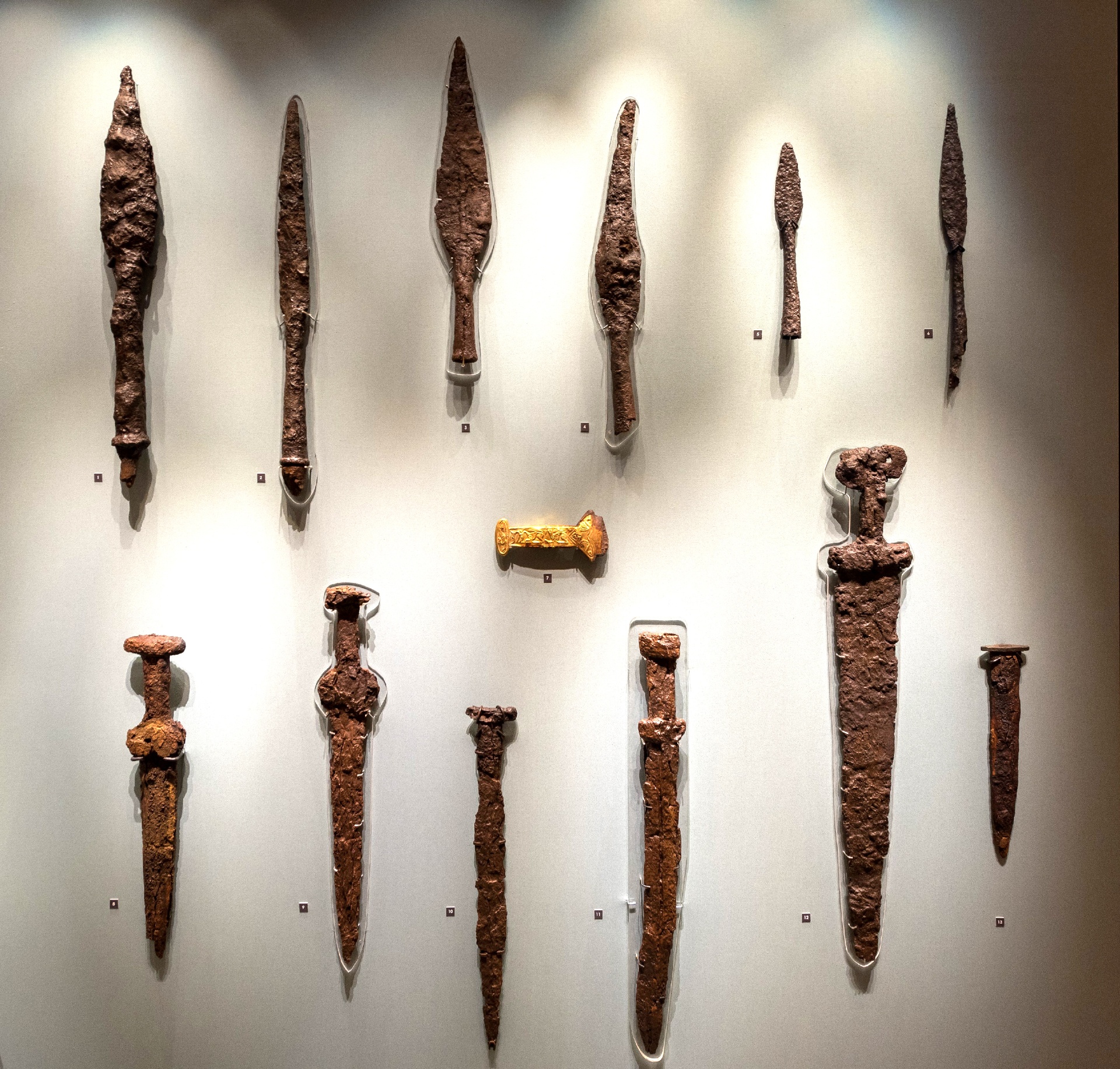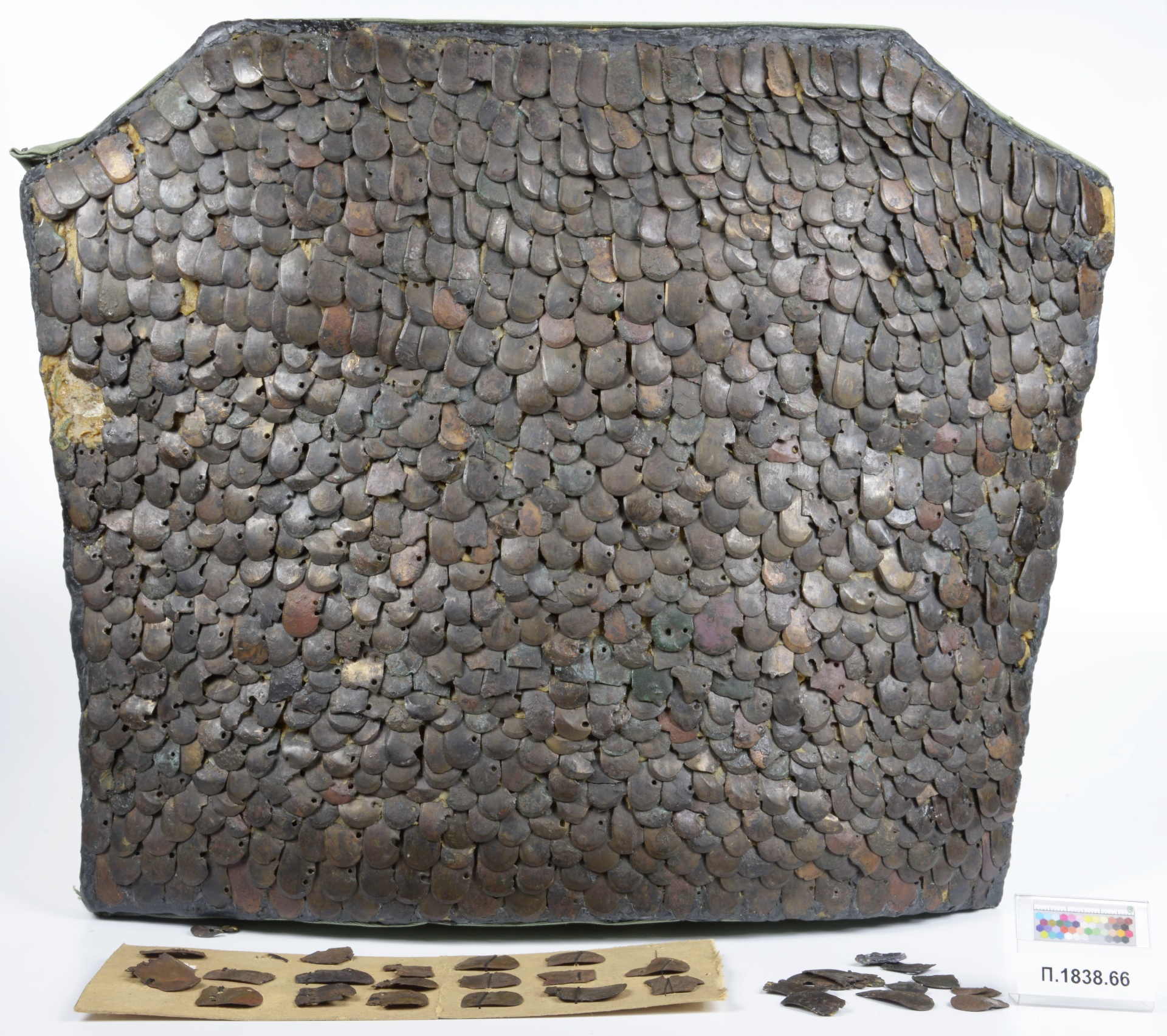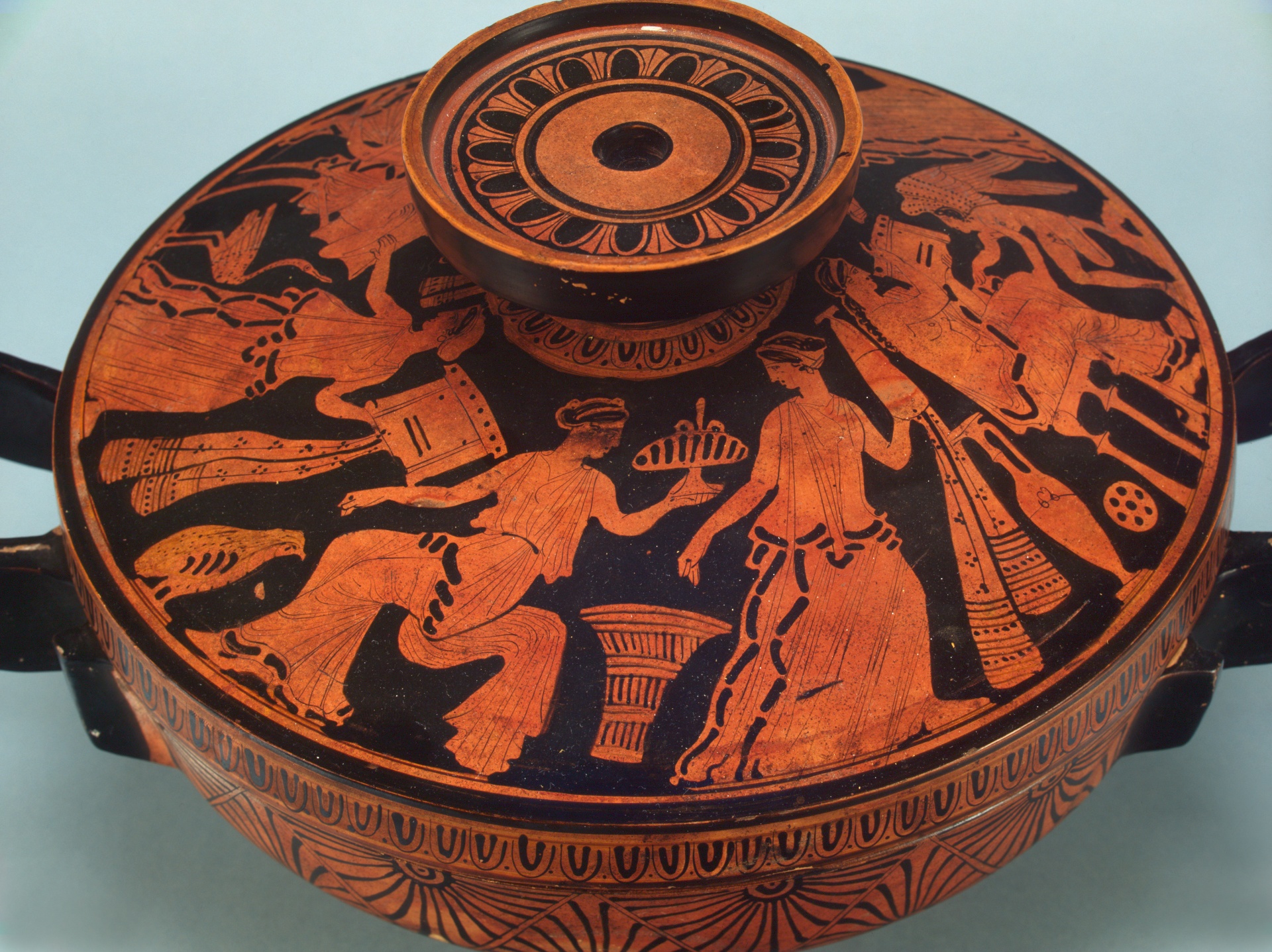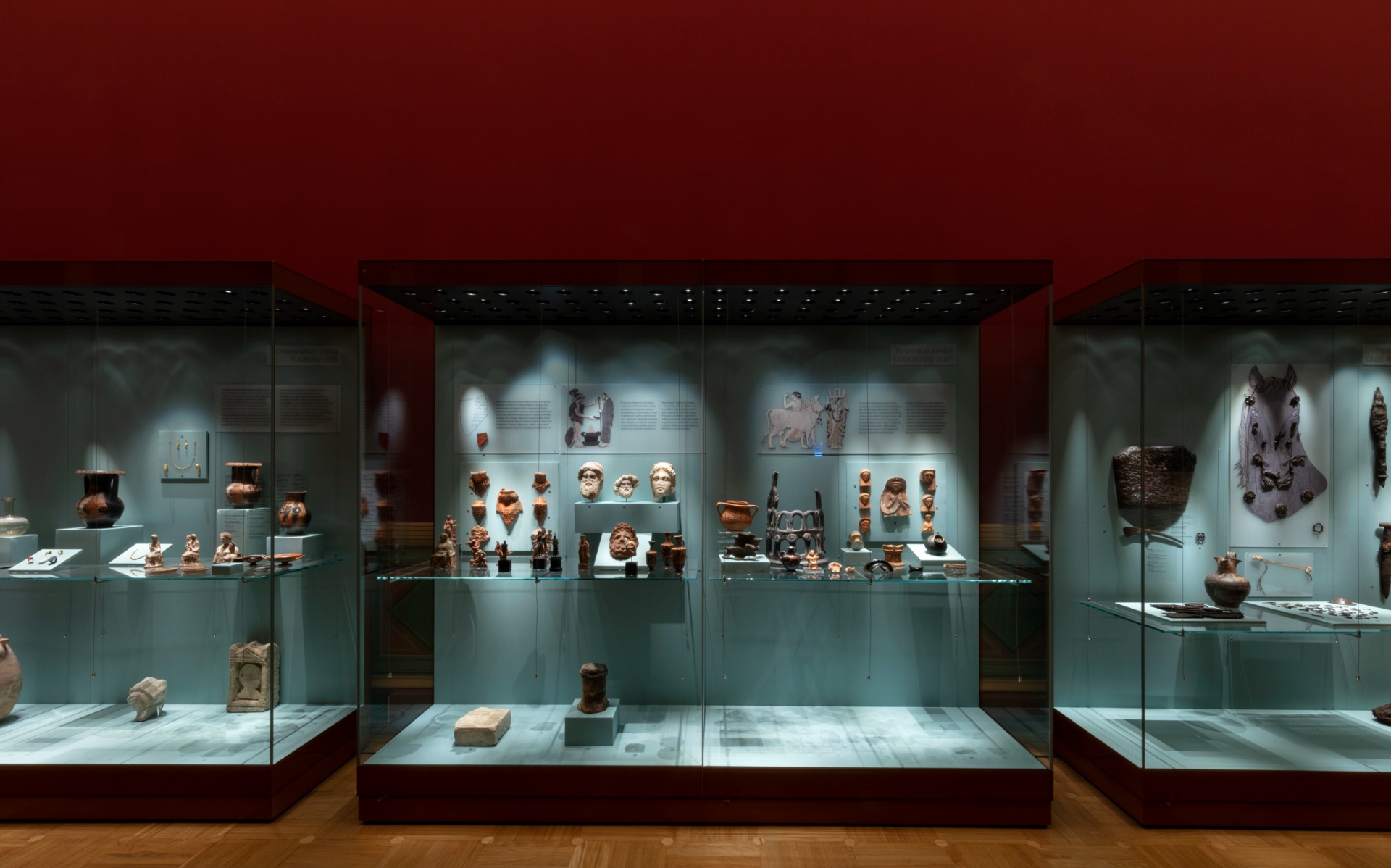Project for the creation of a new permanent exhibition "Ancient colonization of the Northern Black sea region"
in the Gallery (Hall 119) of the New Hermitage building

The project for the creation of the display “Ancient Colonization of the Northern Black Sea Region” is important and symbolic. For almost forty years, this hall, indeed the whole wing of the New Hermitage building, was closed off and used as office and storage space. The work on the restoration and the creation of the new display completed the large-scale programme for the revamping of the displays of the Hermitage’s Department of Classical Antiquity (2000–19). In the course of the programme, 22 displays of ancient art were reconstructed: restoration was carried out on the artistic interiors of the halls in the New Hermitage, new lighting and display equipment was installed and new permanent presentations of the ancient art created. The new display devoted to the period of Classical Antiquity in the history of the south of Russia was installed in the Gallery (Hall 119).
In the 19th century, in 1863, by the time the New Hermitage was opened to the general public, this hall housed the “Gallery of Fine Arts” that included paintings and part of the library consisting “of works relating to the fine arts”. From the mid-1960s until the late 1970s, when the Gallery was closed, it contained part of the display of “The Culture and Art of the Northern Black Sea Region” devoted to the cities of the Bosporan Kingdom: Nymphaeum, Myrmekion and Iluraton,
The opening of the new display took place in December 2019 and was timed to mark the 100th anniversary of academic archaeology in Russia.
The present display of “Ancient Colonization of the Northern Black Sea Region” spans a thousand years in the history of extensive areas of Russia and neighbouring states., Greek city colonies were established in the 8th and 7th centuries BC in the Crimea and other places adjoining the Black Sea. Together with the first settlers, Greek architecture, art, religion and the Greek way of life appeared on the peninsula.
Archaeological excavations of the settlements began in the late 18th century. At first random, then systematic, scientifically organized explorations, expanding and becoming more technically sophisticated, brought back to the light of day ancient statues, painted vases and pieces of jewellery. A new stage in the study and expansion of the collections began with the foundation in 1859 of the Imperial Archaeological Commission, whose responsibilities included organizing excavations, acquiring antiquities, the study and systematic publication of finds. A considerable contribution to knowledge of the ancient past of Russia’s south was made by archaeological research in the Soviet period, when such prominent expeditions as the Nymphaeum, Chersonesus and Berezan operated in the State Hermitage. The research is still continuing today. Eight Hermitage archaeological expeditions are working on sites from Classical Antiquity in the south of Russia.
The display includes collections from the majority of ancient centres on the Black Sea: Olvia, Berezan, Chersonesus, the cities of the Bosporan Kingdom (Panticapaeum, Nymphaeum, Myrmekion, Iluraton, Gorgippia), as well as their necropolises, and presents various aspects of daily life in the Greek settlements in the period between the 6th century BC and the 3rd century AD. The new permanent display contains 1,222 archaeological artefacts: fragments of architecture, murals, marble grave stelas, artistic painted and moulded ceramics, bronze articles, arms and armour, pieces of jewellery, everyday and household items. The majority of the exhibits are on public show for the first time.
The display is divided into five sections with different themes: architecture, seafaring and trade, crafts and applied arts, daily and public life, arms and soldiering, religious traditions and burial rites. They successively reveal different aspects of the life of the population in the ancient cities of the Northern Pontus, introducing visitors afresh to chapters in the history of Russia at the time of Classical Antiquity. The display presents in an understandable and engaging manner the latest achievements of Russian archaeological and historical research. It reflects to a not inconsiderable decree the significant contribution made by the Hermitage’s archaeologists, who have been engaged in the study of the region’s ancient sites for almost a century.
The permanent exhibition "Ancient Colonization of the Northern Black Sea Region" was created with the support of the project's General Sponsor, the Rosneft Oil Public Company.

